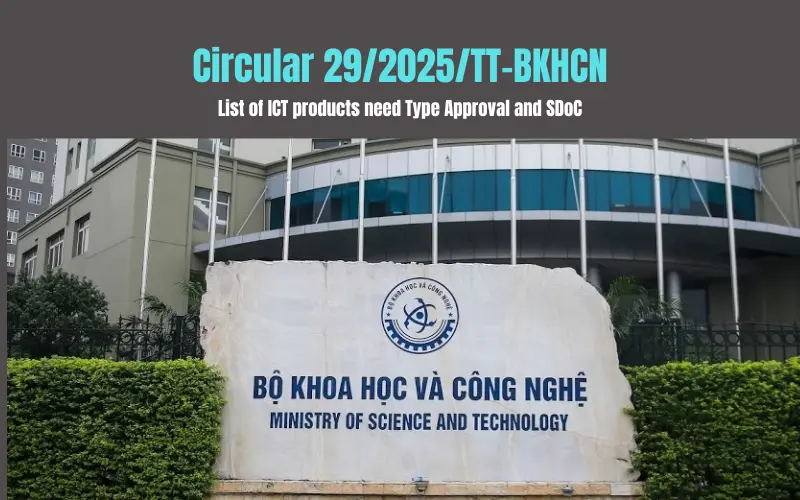As a common cooling device in households, electric fans are always in high demand during the summer, especially energy-efficient models. Although domestically produced electric fans are diverse and abundant, a substantial amount is still imported into Vietnam from various countries such as Japan, South Korea, China, the USA, Europe, Thailand, etc. So, what are the procedures for importing electric fans into Vietnam? Are there any specialized inspection policies to adhere to? How are the customs clearance procedures carried out? Following article will provide answers to these questions.
Summary of electric fan import procedures
In this article, we will guide you through the import procedures for electric fans, including how to determine industry inspection policies, HS code and import tax rates for electric fans, how to distinguish common types of fans, the steps to prepare import and export documents, and some important notes to remember.
Summary of specialized requirements for importing electric fans:
| Type of Electric Fan | Specialized Inspection Policies | Notes | |
| Quality inspection and conformity certification | Testing for minimum energy performance and energy-saving label application | ||
| Table fan, stand fan, school ceiling fan, ceiling fan | Need | Need | Decision No. 2711/QĐ-BKHCN on the list of Group 2 goods subject to specialized inspection Decision No. 14/2023/QD-TTg of the Prime Minister on the list of goods subject to minimum energy performance testing |
| Floor fan, tower fan, bladeless fan, single-phase electric ventilation fan | Need | No need | |
| Air conditioner fan, mini handheld fan, battery-powered electric fan, cooling fan, industrial fan (power above 125W, three-phase electric) | No need | No need | Electric fans with AC mode still require minimum energy performance testing |
Definition and Classification of electric fans
Definition of electric fans
An electric fan is an electrical device used to create an airflow in a space by utilizing the power of an electric motor. Electric fans typically include one or more blades mounted on the motor's rotating shaft. When operational, the blades spin and push out air, creating a breeze to meet various human needs, primarily cooling and ventilation. Due to their flexibility, ease of use, ease of maintenance, and diversity in models and prices, electric fans have become a popular cooling device, chosen by many consumers.

Classification of electric fans
Electric fans can be classified based on several criteria such as design, functionality, or purpose of use. Below are some typical ways of classification:
Classification by Main Function:
- Air-blowing fans (stand fans, wall-mounted fans, ceiling fans, box fans, rechargeable fans)
- Mist fans
- Air cooler fans
- Ventilation exhaust fans
Classification by Drive Type:
- Fans with direct drive motors (gear, screw)
- Fans with indirect drive (via belts, shaft couplings)
Classification by Blade Type:
- Rigid blade fans
- Flexible blade fans
- Bladeless fans
Classification by Purpose of Use:
- Ventilation fans
- Cooling fans
- Drying fans
Classification by Energy Source:
- Electric fans powered by mains electricity
- Fans powered by solar energy and rechargeable batteries
- Electric fans using a combination of energy sources
Some popular types of electric fans
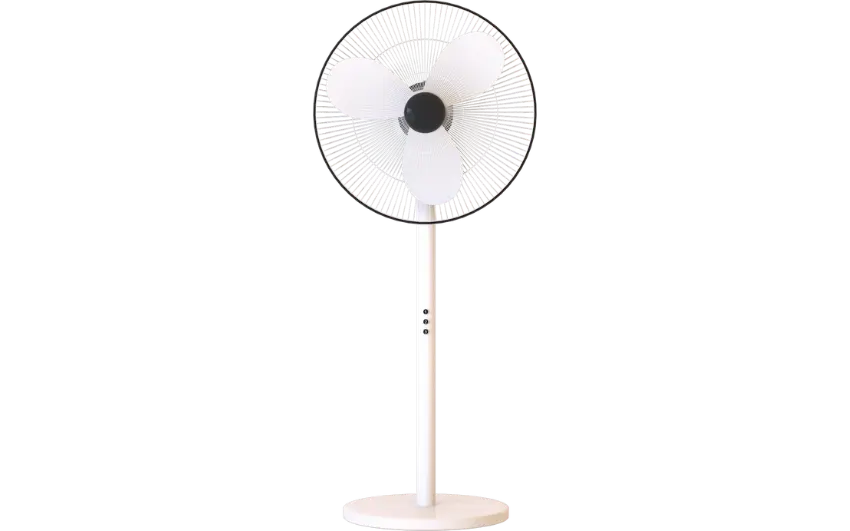
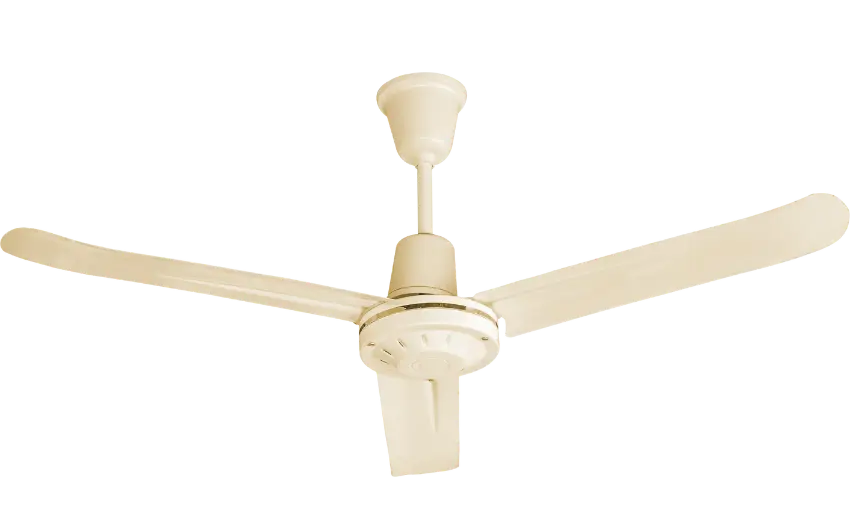
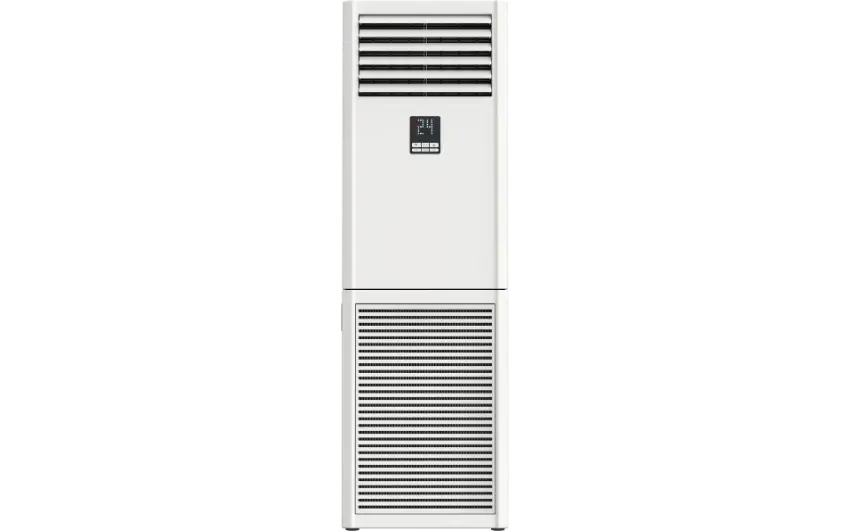
HS code and import tax rate of electric fans
The electric fans has an HS code belonging to group 8414. Below are the HS code and tax information for some common types of electric fans in daily life:
| HS code | Goods description | Import duty (normal) (%) | Preferential import tax (%) | VAT (%) |
| 8414.51 | - Table fan, floor fan, wall fan, window fan, ceiling fan, or attic fan, with an electric motor attached with a power not exceeding 125 W: | |||
| 8414.51.10 | - - - Table fans and box fans | 45 | 30 | 10 |
| - - - Other types: | ||||
| 8414.51.91 | - - - - With protective grille | 37,5 | 25 | 10 |
| 8414.51.99 | - - - - Other types | 37,5 | 25 | 10 |
| 8414.59 | - - Other types: | |||
| - - - Power not exceeding 125 kW: | ||||
| - - - - Other types: | ||||
| 8414.59.41 | - - - - - With protective grille | 22,5 | 15 | 10 |
| 8414.59.49 | - - - - - Other types | 22,5 | 15 | 10 |
Note: For air cooler fans and mist fans, the reference HS code is 8479.60.00 (air-cooling machines using evaporation); the standard import tax rate is 5%; preferential rate: 0%.
If the imported goods are rechargeable fans that come with solar panels, then the HS code is 8541.43.00; preferential import tax rate: 5%; standard rate: 0% and VAT: 10%.
It can be seen that the tax rates for electric fans are quite high. Therefore, for goods imported from countries that have an FTA (Free Trade Agreement) with Vietnam, such as ASEAN members, the EU; China, South Korea, Japan, businesses should obtain a Certificate of Origin (C/O) to benefit from the most favorable import tax rates.
Set of document to import electric fans
Similar to other types of goods, the documentation required for importing electric fans includes:
- Customs declaration;
- Commercial invoice;
- Bill of lading;
- Packing list;
- Sales contract;
- Certificate of Origin CO (if any);
- Product technical specifications document or catalog (if any).
However, since electric fans are goods that require specialized inspections before being distributed in the market, in addition to the usual customs documentation, businesses will also need to prepare:
- Application for state quality inspection registration (for electric fans with HS codes listed in the Group 2 goods category according to Decision No. 2711/QĐ-BKHCN);
- Results of the minimum energy performance tests or a letter confirming registration of energy performance declaration and energy label.
- Please review the summary table above in the article to learn about the specialized testing procedures applicable to each type of electric fan.
Note: Requirements for compliance certification and energy performance testing apply not only to imported electric fans but also to domestically manufactured ones.
Procedure to import electric fans
Step 1: Register for state quality inspection at the Bureau of Standards, Metrology and Quality. Register for performance testing at the Testing Laboratory.
Step 2: File a declaration at the local customs sub-department. Submit the quality inspection registration and performance test registration along with the customs declaration. If the importing company already has performance test results, these can be used directly without re-registration.
Step 3: Clear customs and transport the goods to the company's warehouse. After receiving the energy performance test results, the company must submit the documentation along with the confirmation of goods quality inspection registration to clear customs.
Step 4: Conduct minimum energy performance testing according to TCVN 7826:2015 at a registered lab or one designated by the Ministry of Industry and Trade. Submit the performance test results to the customs authority after completing the tests.
Step 5: Carry out CR conformity certification procedures. Submit the conformity certification results to the one-stop information portal to complete the process.
Note: If the company certifies according to Method 7 (testing and certification by shipment), the certificate is only valid for one import shipment, and this step needs to be performed for each shipment.
Step 6: Declare energy labeling at the Department of Energy Efficiency under the Ministry of Industry and Trade or through the ministry's online service portal. For domestically produced electric fans, manufacturers need to carry out the conformity announcement procedure at the local Bureau of Standards, Metrology and Quality.
Step 7: Apply the CR conformity mark, energy label, and other supplementary labels (if any) before marketing the products.

In the context of an increasingly developing and diverse electric fan market, importing electric fans into Vietnam requires businesses to strictly adhere to relevant regulations and procedures. However, meeting these requirements not only ensures product quality but also enhances the company's competitiveness in the market. Customers are becoming more meticulous in choosing high-quality, high-performance, and energy-efficient products.
Preview of VNEEP EE DoC acceptance letter issued for fans
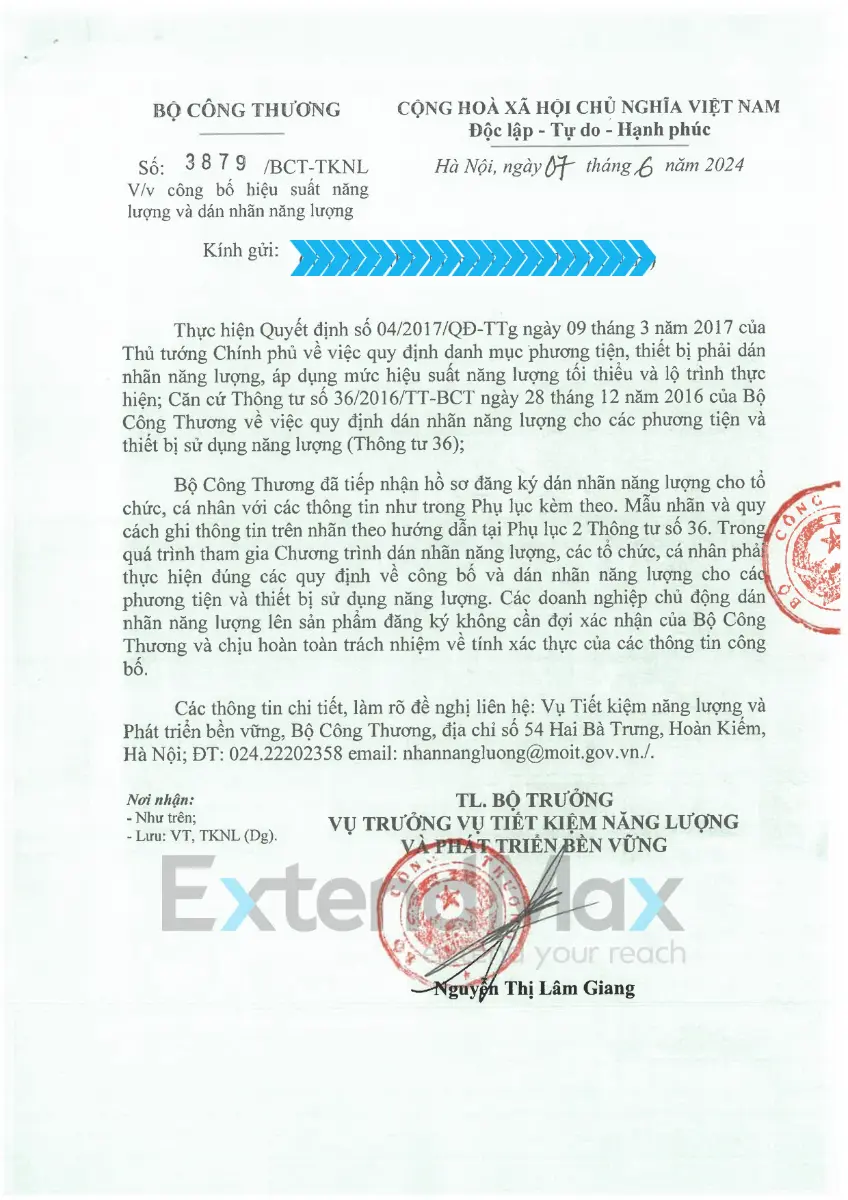
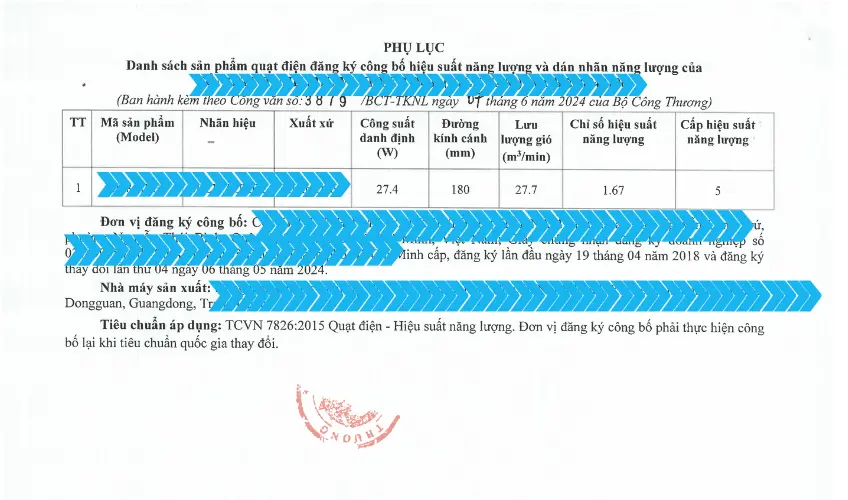
Follow us via FB FanPage or LinkedIn to stay updated with the latest information
Please leave a comment and share the article if you fint it useful in your work
↓ ↓ ↓ ↓ ↓ ↓ ↓



